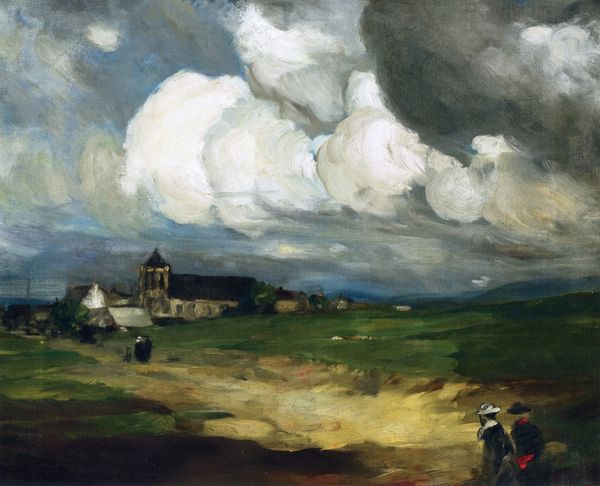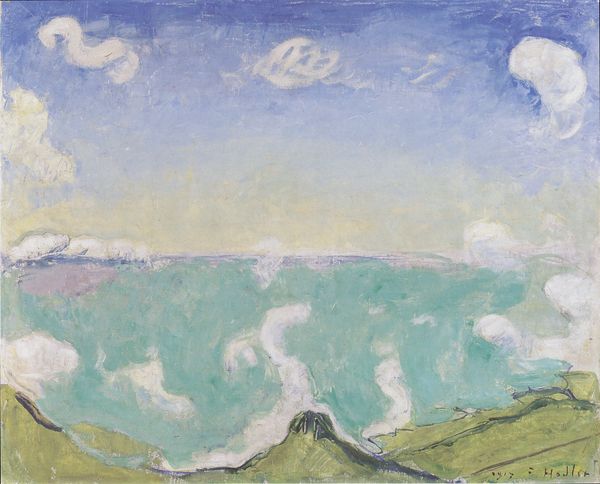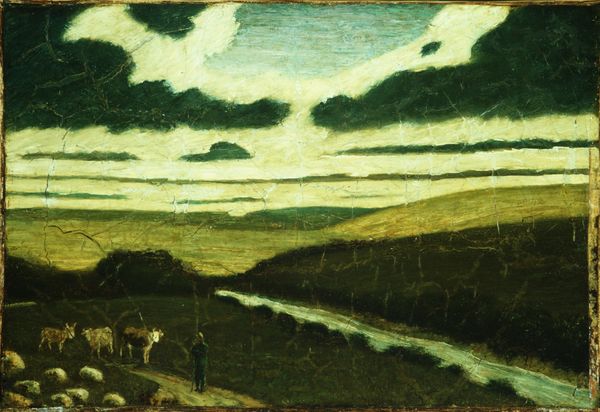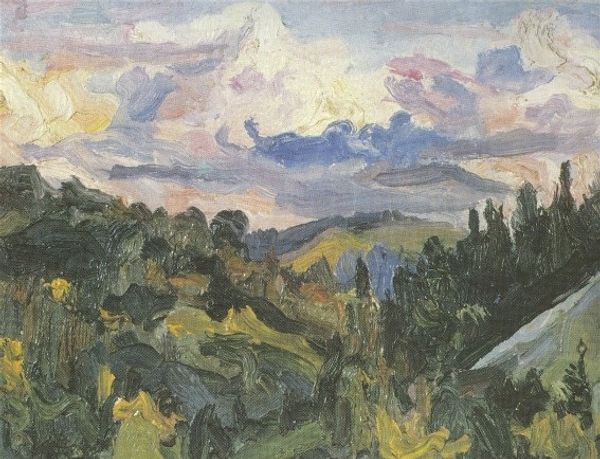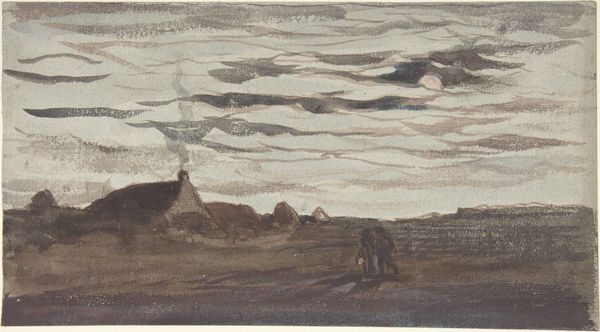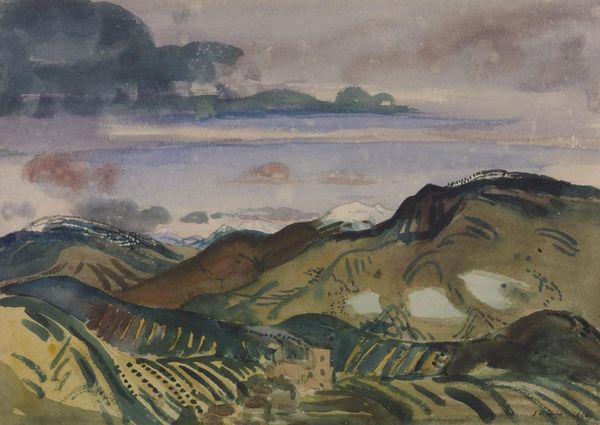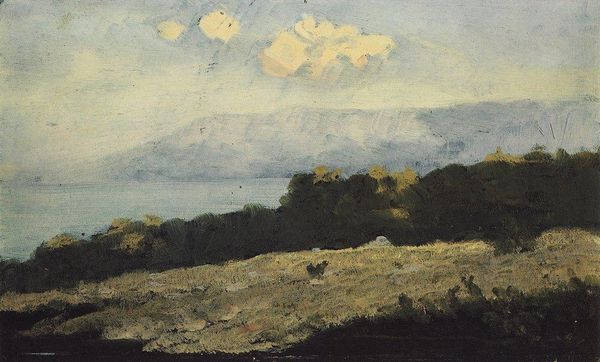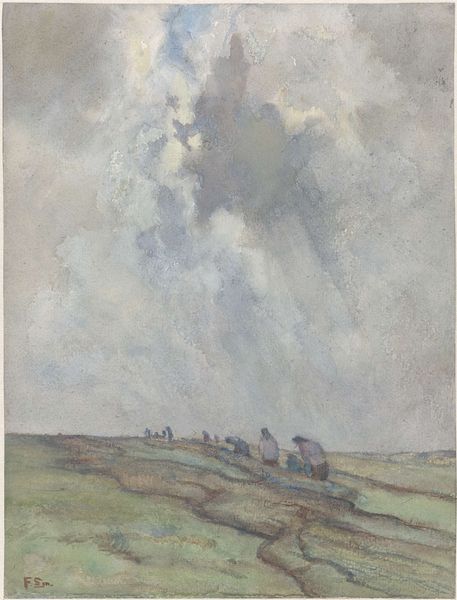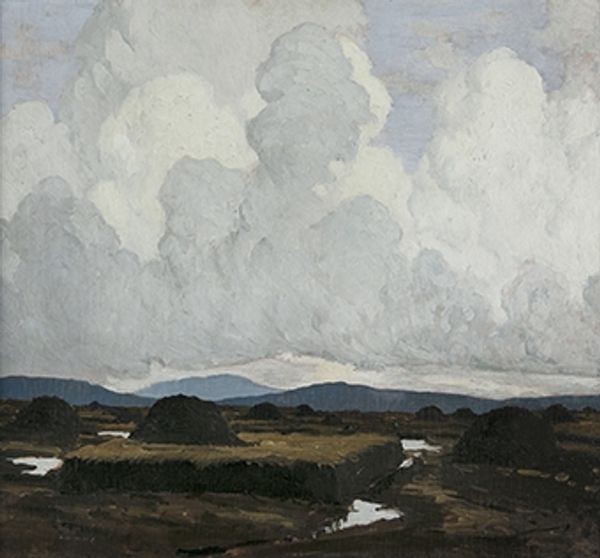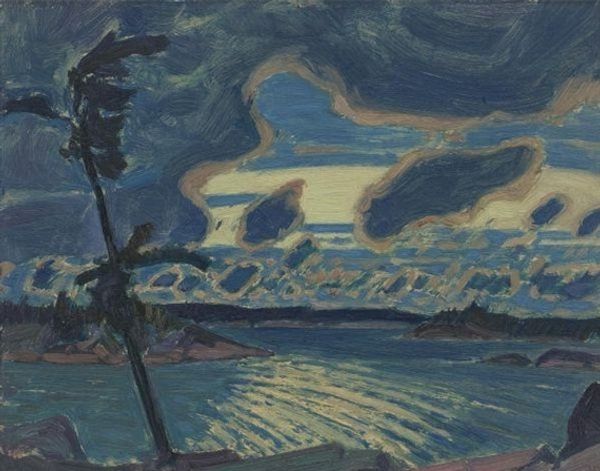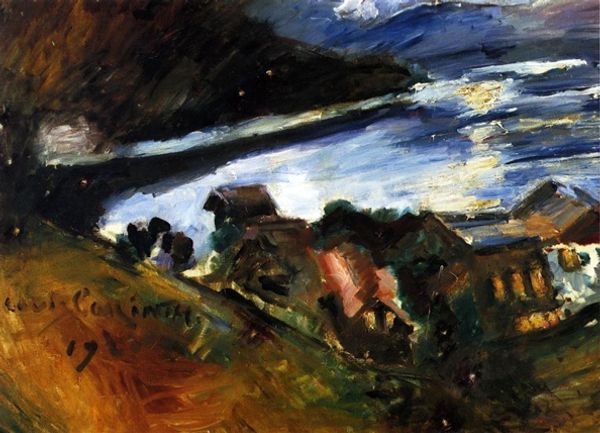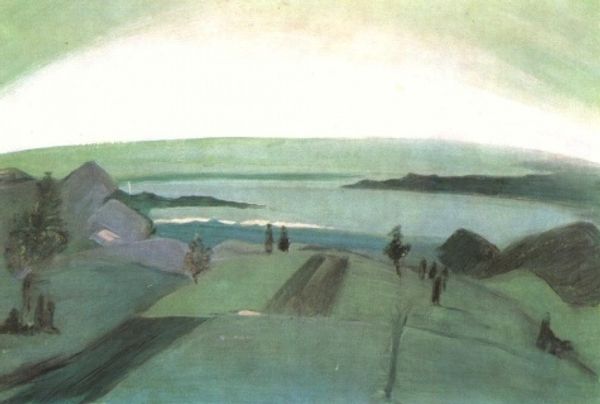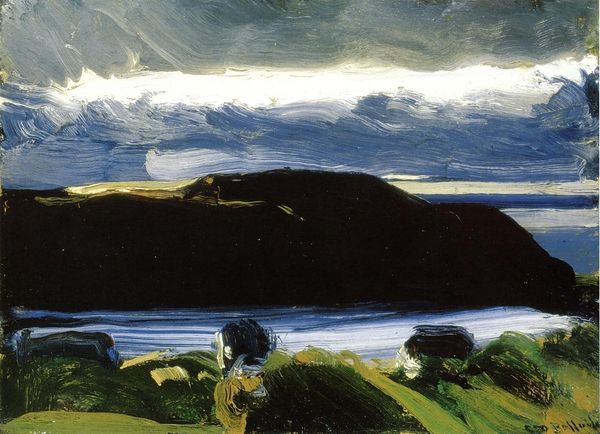
Copyright: Public domain
Curator: This is Théophile Alexandre Steinlen’s "Dorf Im Gewitter," painted in 1895. He rendered it with oil on canvas, and, fitting to the title, it depicts a village beneath a gathering storm. Editor: That sky! It's immense, dominating everything. The clouds are like mountains, poised to unleash a torrent. Gives you that feeling of impending doom, that thick, pregnant air just before a storm breaks. Curator: Steinlen was deeply engaged with social issues. He worked often for journals such as "Le Chat Noir" and "Gil Blas," and although known more for his posters and prints, his paintings often reflected the lives of working-class Parisians and his commitment to Realism. The approaching storm can read like metaphor here... Editor: Oh, totally. This isn't just a landscape, is it? The little village huddled below – the darkness creeping in. Makes me wonder about the people inside those houses. Are they bracing themselves, worrying about crops, or just carrying on with their daily lives, oblivious to the cosmic drama unfolding overhead? There’s a certain loneliness, even. Curator: It’s interesting you say that because, in a time of massive urban expansion and political strife in Europe, landscapes served often to underscore anxieties of an entire continent. One of Steinlen’s stylistic choices was to not clearly portray the houses that make up this little village. This contributes to this painting’s sense of unsettled anticipation. Editor: I also feel some…reassurance. There’s still light on the fields beyond and in some parts of the sky. The storm might pass or it may linger, but either way life persists! Curator: Exactly. Steinlen captures that transient moment, holding the potential for both destruction and renewal. Considering his dedication to political causes, there may even be a hidden meaning beneath all the thunder. Editor: Absolutely, this canvas rumbles with questions, not just the boom of thunder but the quiet hum of human resilience in the face of something far bigger than ourselves. Curator: Very well said, indeed. An engagement with social commentary is, in the end, what immortalizes Steinlen’s landscape. Editor: Yeah. Makes you want to pull up a chair and watch the whole thing unfold. Thanks, Steinlen.
Comments
No comments
Be the first to comment and join the conversation on the ultimate creative platform.
